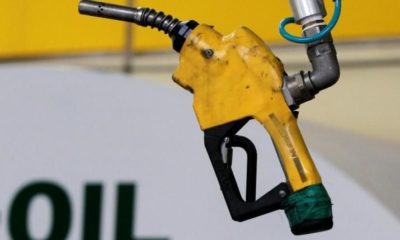- N11tn Petrol Subsidy, Illogical
Terminally ill refineries, unsustainable imports, intermittent scarcity and a notoriously opaque accounting system; things might not get better anytime soon for Nigeria’s petroleum industry, let alone the economy.
It is why the Federal Government has spent more than N10 trillion on petrol subsidies in the past six years, the Senate recently stated as it approved another subsidy payment of N129 billion to 67 oil marketers. This is a wasteful hole that ought to be sealed swiftly.
In all, the Senate Committee on Downstream Petroleum Sector estimated that it cost Nigeria N11 trillion to fund petroleum subsidies in six years. For a major crude oil producer, this is an irrational economic model. Nonetheless, this is not new because the country’s refineries, with 445,000 barrels per day name-plate, have been obsolete for decades. In turn, the country has depended heavily on imports to sustain itself. How ridiculous.
Until the 1990s, the imports were minimal, but the refineries progressively degenerated due to mismanagement, cronyism and corruption. Predictably, massive imports ensued, which the Olusegun Obasanjo, the short-lived Umaru Yar’Adua and the Goodluck Jonathan administrations failed to tackle. Amidst all this, corruption and product scarcity thrived.
Undeniably, the sleazy bazaar reached its zenith on Jonathan’s watch. Import contracts were dished out to shell companies and the Peoples Democratic Party’s cronies. In one unforgettable episode, a committee discovered that the Accountant-General of the Federation’s office made 128 subsidy payments of N999.99 million in the space of 24 hours between January 12 and 13, 2011.
Subsequently, the number of petrol importers rose geometrically from 19 in 2008 to 140 in 2011. Most of the products were supplied only on paper; many importers got paid for products never imported. Products loaded in tankers did not reach their destination; others were smuggled to neighbouring countries. In total, the Jonathan government paid out N2.57 trillion as subsidies, 900 per cent more than the N245 billion in the budget. Bizarrely, that was half of the total federal budget for 2011. Rightly, when that administration raised petrol prices in January 2012, it triggered a backlash.
It is unfortunate that the Muhammadu Buhari government is enmeshed in the same subsidy folly in the guise of “under-recoveries.” On assuming power in 2015, the President had declared that he would stop petrol subsidies and rehabilitate the refineries. On both counts, he has failed woefully. This is incomprehensible: Buhari campaigned for office promising to enthrone financial rectitude; his experience as oil minister during Obasanjo’s military dictatorship in the late 1970s has been of no use.
These days, it is the public entity, the Nigerian National Petroleum Corporation, that shoulders the burden of importing petroleum products. Absurdly, the oil ministry regulates the price of petrol, capping it at N145 per litre though it has deregulated diesel imports. By fiat, the NNPC solely determines the quantity of petrol being consumed daily. This is anti-competition, locking out a chunk of business organisations in the downstream sector.
Moreover, it is subject to confusion and opacity. First, the NNPC labels whatever it spends on subsidies “under recovery” in an attempt to bypass scrutiny of subsidy payments by the National Assembly. This is a weird and illegal accounting system, which landed Jonathan’s administration in hot water in 2012. Second, Nigeria’s daily consumption has creased up astronomically. From about 35 million litres in 2011, the NNPC claims that Nigerians now consume over 53.2 million litres daily. This is suspicious. Instructively, the regulator of the downstream is also the sole importer.
In all this, the economy suffers profoundly. Too much money is being wasted on importing refined products and subsidy payments. That N11 trillion would have gone a long way in completing the 11,886 abandoned federal infrastructure projects compiled by the Presidential Projects Assessment Committee in 2011. There is yet the issue of agonising periodic scarcity. Unwittingly, the regulator has excluded the investors who would have built their own profit-making refineries. This is wrong.
In other oil producing countries, high premium is attached to refining for domestic consumption and exports. Aiming to double its refining capacity, Angola’s Sonangol has recently signed a partnership with an independent, United Shine, to construct a-60,000 barrels per day refinery in its Cabinda province. In 2013, Singapore (which produces very little crude), was refining 1.1 million barrels per day, stated the Organisation of Petroleum Exporting Countries. Indeed, OPEC estimates that by 2021, refining by member countries of Kuwait, Saudi, Venezuela, Ecuador, Angola, Iran, Algeria and the UAE will reach 13.3 million barrels per day with an investment profile of $66.5 billion.
In contrast, Nigeria’s four moribund refining entities run at a loss, with scant hope of resuscitation. This is illogical. An NNPC report stated that in Buhari’s first term, the refineries lost over N231 billion. A note by BudgIT, a non-profit, estimated in its “Inside Nigeria’s Local Refineries” report that the refineries incurred a combined loss of N159 billion in 2018, with capacity utilisation at a mere 8.6 per cent. This is not a business model that can succeed, which should provoke serious thinking in the Buhari government.
To show seriousness, Buhari should end the conflict of interest in the industry. Henceforth, the President should cease to be the oil minister. The Petroleum Resources Minister, who also heads the NNPC board, should not head the boards of other agencies under the NNPC. This way, these other agencies can act independently.
Crucially, Buhari should privatise the refineries. Holding on to them is a massive disservice to the national economy. Shell Petroleum constructed the first refinery in partnership with the government. Using this model, the Buhari government can enter into partnerships with the oil majors to build new refineries. With a modern rail network, products can be transported to all parts of the country. At the same time, this policy will encourage those acquiring licences to begin work on their refineries and save the economy from ruin.

 Naira4 weeks ago
Naira4 weeks ago


 Naira4 weeks ago
Naira4 weeks ago




 Naira4 weeks ago
Naira4 weeks ago




 Naira3 weeks ago
Naira3 weeks ago
 Commodities4 weeks ago
Commodities4 weeks ago


 News4 weeks ago
News4 weeks ago
 Travel4 weeks ago
Travel4 weeks ago




 Naira3 weeks ago
Naira3 weeks ago














